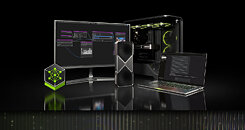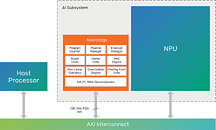
NVIDIA TensorRT Boosts Stable Diffusion 3.5 Performance on NVIDIA GeForce RTX and RTX PRO GPUs
Generative AI has reshaped how people create, imagine and interact with digital content. As AI models continue to grow in capability and complexity, they require more VRAM, or video random access memory. The base Stable Diffusion 3.5 Large model, for example, uses over 18 GB of VRAM - limiting the number of systems that can run it well. By applying quantization to the model, noncritical layers can be removed or run with lower precision. NVIDIA GeForce RTX 40 Series and the Ada Lovelace generation of NVIDIA RTX PRO GPUs support FP8 quantization to help run these quantized models, and the latest-generation NVIDIA Blackwell GPUs also add support for FP4.
NVIDIA collaborated with Stability AI to quantize its latest model, Stable Diffusion (SD) 3.5 Large, to FP8 - reducing VRAM consumption by 40%. Further optimizations to SD3.5 Large and Medium with the NVIDIA TensorRT software development kit (SDK) double performance. In addition, TensorRT has been reimagined for RTX AI PCs, combining its industry-leading performance with just-in-time (JIT), on-device engine building and an 8x smaller package size for seamless AI deployment to more than 100 million RTX AI PCs. TensorRT for RTX is now available as a standalone SDK for developers.
NVIDIA collaborated with Stability AI to quantize its latest model, Stable Diffusion (SD) 3.5 Large, to FP8 - reducing VRAM consumption by 40%. Further optimizations to SD3.5 Large and Medium with the NVIDIA TensorRT software development kit (SDK) double performance. In addition, TensorRT has been reimagined for RTX AI PCs, combining its industry-leading performance with just-in-time (JIT), on-device engine building and an 8x smaller package size for seamless AI deployment to more than 100 million RTX AI PCs. TensorRT for RTX is now available as a standalone SDK for developers.





























































